
AI Commercials
Digital Ritual Marketing: Harnessing Tradition for Modern Success

Contents
- 1 What Is Digital Ritual Marketing?
- 2 Why Digital Ritual Marketing Matters in 2025
- 3 Key Elements of Effective Digital Ritual Marketing
- 4 Strategies to Implement Digital Ritual Marketing
- 5 Real-World Examples of Digital Ritual Marketing
- 6 Measuring the Success of Digital Ritual Marketing
- 7 Challenges and Solutions in Digital Ritual Marketing
- 8 The Future of Digital Ritual Marketing
In the ever-evolving landscape of digital marketing, digital ritual marketing emerges as a powerful strategy that merges time-honored traditions with cutting-edge technology. This innovative approach taps into the human desire for meaningful, repetitive behaviors to foster deeper connections between brands and their audiences. By creating structured, engaging experiences, businesses can transform casual visitors into loyal customers. This article explores the concept of digital ritual marketing, its benefits, strategies, and real-world applications, offering actionable insights to maximize engagement and brand loyalty in 2025.
What Is Digital Ritual Marketing?
Digital ritual marketing refers to the strategic use of repetitive, meaningful online interactions to build emotional connections with consumers. Unlike traditional marketing, which often focuses on one-off campaigns, this approach emphasizes consistent, ritualistic experiences that resonate with audiences on a deeper level. For instance, a brand might encourage daily app check-ins or weekly newsletter engagement, creating habits that integrate seamlessly into customers’ lives.
The concept draws inspiration from cultural and social rituals—think morning coffee routines or annual holiday traditions. By leveraging these familiar patterns, digital ritual marketing creates predictable, rewarding interactions that enhance user engagement. As a result, brands can foster a sense of community and loyalty, ensuring customers return time and again.
Why Digital Ritual Marketing Matters in 2025
The digital landscape is more crowded than ever, with businesses vying for consumer attention across platforms. Digital ritual marketing stands out by offering a structured way to capture and retain that attention. Here are some key reasons why this strategy is critical for modern success:

1. Builds Emotional Connections
Rituals evoke emotions, and emotions drive loyalty. By incorporating ritualistic elements into digital campaigns, brands can create memorable experiences that resonate with their audience. For example, a fitness app that prompts daily workout challenges fosters a sense of achievement, strengthening the user’s bond with the brand.
2. Enhances Customer Retention
Repetitive behaviors, when rewarding, become habits. Digital ritual marketing encourages customers to engage regularly, reducing churn rates. A study by Bain & Company found that increasing customer retention by 5% can boost profits by 25% to 95%. Rituals make this possible by embedding brands into daily routines.
3. Differentiates Your Brand
In a saturated market, standing out is challenging. Digital ritual marketing offers a unique way to differentiate by creating branded experiences that feel personal and meaningful. For instance, Starbucks’ rewards program encourages daily purchases through gamified rituals, setting it apart from competitors.
4. Leverages Behavioral Psychology
Humans are wired to seek patterns and routines. Digital ritual marketing taps into this psychology by designing interactions that feel instinctive and rewarding. By aligning with these natural tendencies, brands can drive higher engagement rates.
Key Elements of Effective Digital Ritual Marketing
To implement digital ritual marketing successfully, businesses must focus on several core components. These elements ensure that rituals are engaging, sustainable, and aligned with brand goals.
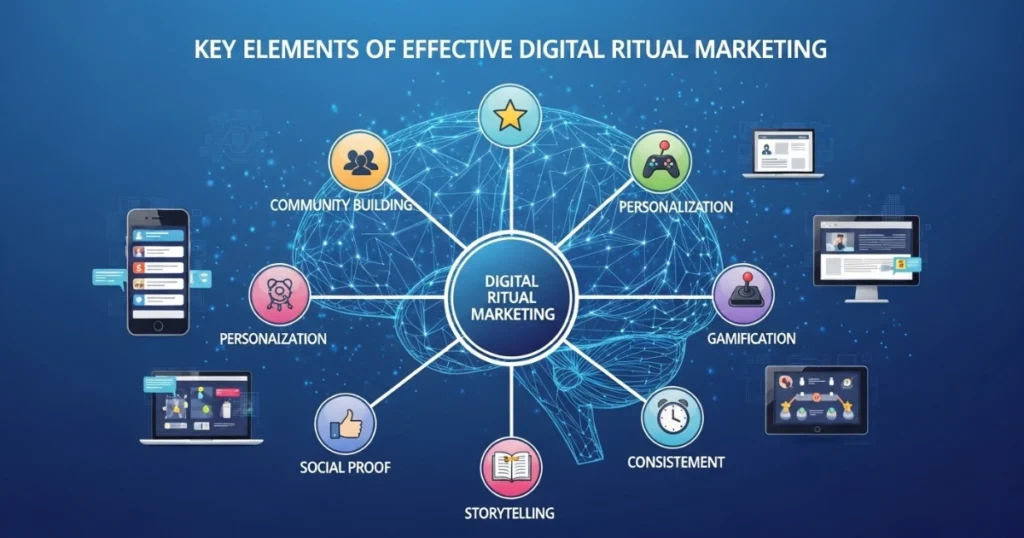
1. Consistency
Rituals thrive on predictability. Whether it’s a weekly email, a daily social media challenge, or a monthly subscription box, consistency is key. For example, Duolingo’s daily language-learning prompts keep users engaged through regular, bite-sized interactions.
2. Emotional Resonance
Effective rituals evoke positive emotions, such as joy, anticipation, or belonging. Brands should design experiences that align with their audience’s values and aspirations. A skincare brand, for instance, might create a nightly self-care ritual that promotes relaxation and confidence.
3. Simplicity
Complex rituals are hard to sustain. Digital ritual marketing should be easy to adopt and integrate into daily life. For example, a meditation app like Headspace offers short, guided sessions that fit seamlessly into busy schedules.
4. Reward Systems
Rewards reinforce habits. Digital ritual marketing often incorporates gamification, points, or exclusive content to incentivize participation. Sephora’s Beauty Insider program, for instance, rewards customers with points for purchases, encouraging repeat engagement.
5. Community Building
Rituals are often communal, fostering a sense of belonging. Brands can leverage social media or online forums to create shared experiences. For example, Peloton’s live classes create a virtual community where users feel connected through shared fitness goals.
Strategies to Implement Digital Ritual Marketing
Ready to harness the power of digital ritual marketing? Here are actionable strategies to get started, ensuring maximum engagement and long-term success.
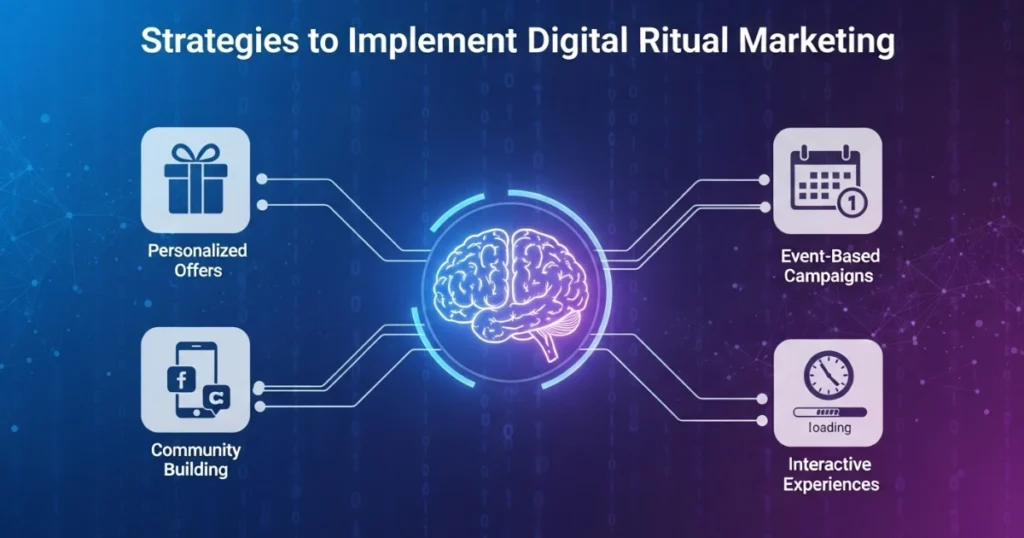
1. Create Daily Touchpoints
Encourage daily interactions through apps, emails, or social media. For example, a coffee brand might send a daily brewing tip or recipe, turning morning coffee into a branded ritual. These touchpoints keep your brand top-of-mind and foster loyalty over time.
2. Gamify the Experience
Gamification adds fun and motivation to rituals. Consider leaderboards, badges, or progress trackers to keep users engaged. Fitbit, for example, uses step challenges and virtual badges to encourage daily activity, making fitness a rewarding ritual.
3. Leverage Seasonal or Cultural Moments
Tie your rituals to holidays, seasons, or cultural events to enhance relevance. A retail brand might create a “12 Days of Deals” campaign during the holiday season, encouraging daily check-ins for exclusive offers. This approach aligns with existing consumer behaviors, making adoption easier.
4. Personalize the Experience
Personalization makes rituals feel tailored and meaningful. Use data to customize interactions based on user preferences or behavior. For instance, Spotify’s “Daily Mix” playlists offer personalized music recommendations, encouraging daily listening.
5. Encourage User-Generated Content
Invite customers to share their experiences as part of the ritual. A beauty brand might create a hashtag challenge, asking users to post their nightly skincare routines. This not only boosts engagement but also amplifies your brand through user-generated content.
6. Use Push Notifications Strategically
Push notifications can prompt users to participate in rituals at the right time. For example, a meditation app might send a reminder at 8 PM for a nightly session. However, balance is crucial—too many notifications can feel intrusive and disrupt the ritual.
Real-World Examples of Digital Ritual Marketing
To illustrate the power of digital ritual marketing, let’s explore some successful examples from leading brands.
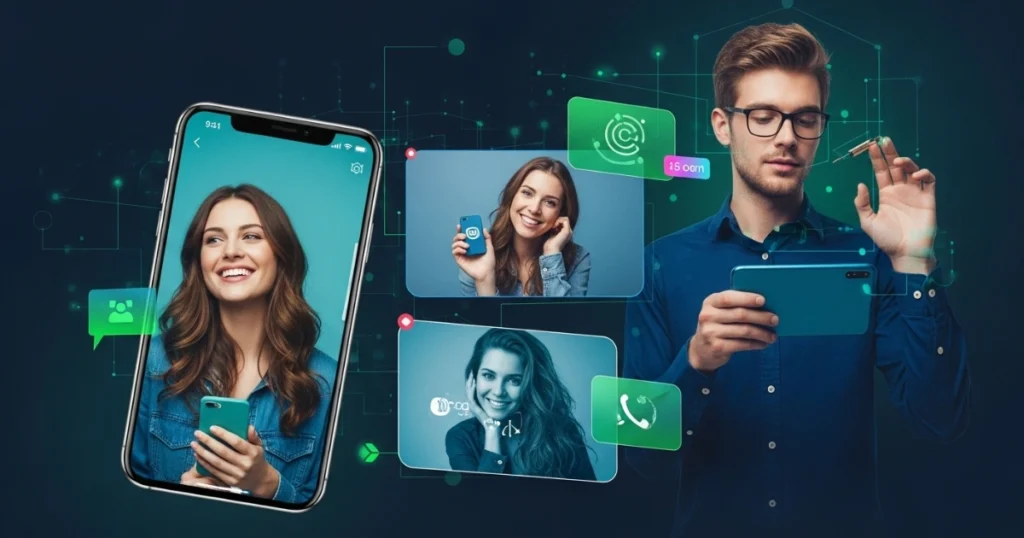
1. Starbucks Rewards Program
Starbucks uses digital ritual marketing through its rewards app, encouraging daily purchases with points, free drinks, and exclusive offers. The app’s gamified system creates a habit loop, where customers return regularly to earn rewards.
2. Duolingo’s Daily Streaks
Duolingo’s streak system motivates users to practice languages daily. The app sends reminders and celebrates milestones, turning language learning into a rewarding ritual. This approach has helped Duolingo retain millions of active users.
3. Nike Run Club
Nike’s Run Club app fosters a running ritual by offering guided runs, progress tracking, and community challenges. Users feel motivated to run regularly, strengthening their connection with the brand.
4. Headspace’s Meditation Prompts
Headspace encourages daily mindfulness through short, guided meditations and reminders. By making meditation accessible and rewarding, the app has built a loyal user base that integrates the brand into their daily lives.
Measuring the Success of Digital Ritual Marketing
To ensure your digital ritual marketing efforts are effective, track key performance indicators (KPIs) that align with your goals. Here are some metrics to monitor:
- Engagement Rate: Measure how often users participate in your rituals, such as daily app check-ins or social media interactions.
- Retention Rate: Track the percentage of users who continue engaging over time. Higher retention indicates successful habit formation.
- Customer Lifetime Value (CLV): Calculate the long-term value of customers engaged in your rituals. A rising CLV suggests stronger loyalty.
- Net Promoter Score (NPS): Survey customers to gauge their likelihood of recommending your brand. Rituals that foster community often boost NPS.
- Conversion Rates: Monitor how rituals drive actions like purchases or sign-ups. For example, a daily deal ritual should increase sales.
Use analytics tools like Google Analytics, Mixpanel, or customer relationship management (CRM) platforms to track these metrics. Regularly analyze data to refine your approach and maximize impact.
Challenges and Solutions in Digital Ritual Marketing
While digital ritual marketing offers immense potential, it comes with challenges. Here’s how to address common obstacles:
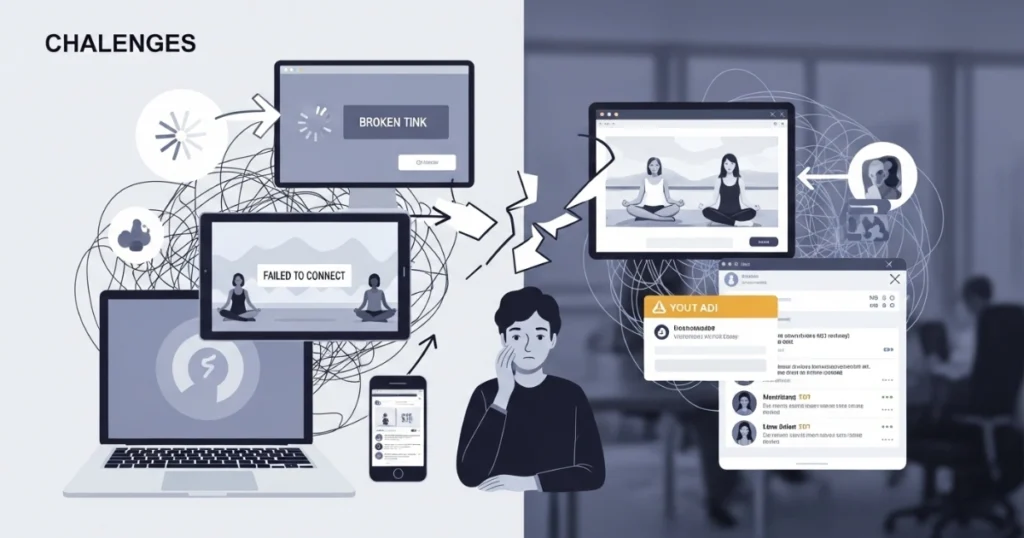
1. User Fatigue
Too many notifications or repetitive tasks can lead to burnout. Solution: Keep rituals simple and rewarding, and allow users to customize their experience. For example, let users choose notification frequency.
2. Lack of Engagement
If rituals don’t resonate, users won’t participate. Solution: Conduct audience research to understand preferences and design rituals that align with their values. A/B testing can help identify what works best.
3. High Implementation Costs
Developing apps or gamified systems can be expensive. Solution: Start small with low-cost tactics, like email campaigns or social media challenges, and scale as you see results.
4. Maintaining Consistency
Inconsistent delivery can break the ritual. Solution: Use automation tools to schedule and deliver content reliably. Platforms like Mailchimp or Hootsuite can streamline this process.
The Future of Digital Ritual Marketing
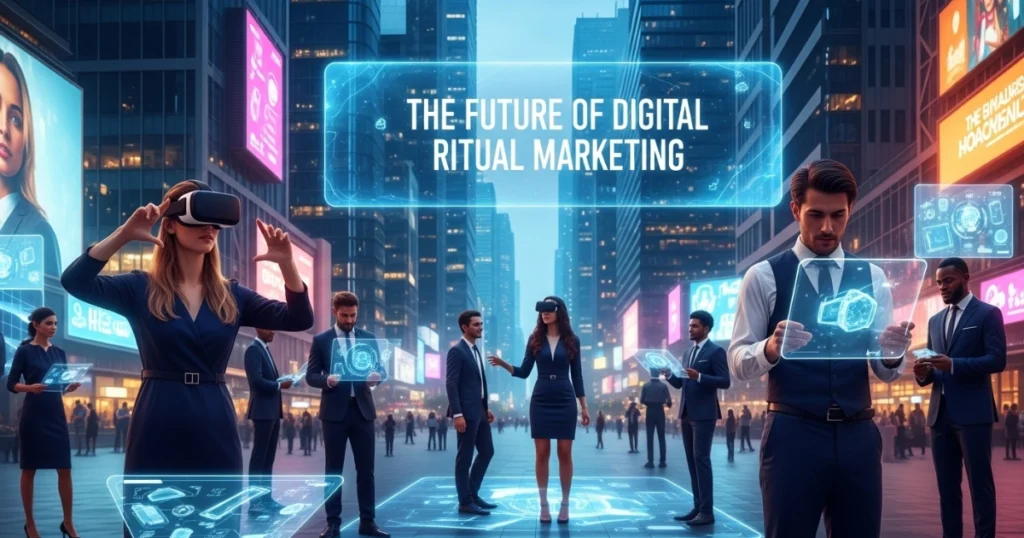
As technology evolves, so will digital ritual marketing. Emerging trends like artificial intelligence (AI) and augmented reality (AR) are poised to enhance ritualistic experiences. For example, AI can create hyper-personalized rituals based on real-time user data, while AR can offer immersive branded experiences, like virtual try-ons or interactive challenges.
Moreover, the rise of the metaverse offers new opportunities for digital rituals. Brands could create virtual spaces where users gather for daily or weekly events, fostering community in a digital realm. As these technologies mature, businesses that adapt early will gain a competitive edge.
Conclusion
Digital ritual marketing is a game-changer for brands seeking to build lasting connections with their audience. By blending tradition with modern technology, this strategy creates meaningful, repeatable experiences that drive engagement and loyalty. From daily app check-ins to gamified rewards, the possibilities are endless. To succeed, focus on consistency, emotional resonance, and simplicity while leveraging data to refine your approach. As we move into 2025, digital ritual marketing will continue to shape the future of customer engagement, offering businesses a powerful tool to stand out in a crowded digital world. Start implementing these strategies today to unlock the full potential of your brand.


Mythic Content Strategy: Crafting Legendary Online Success
Updated on September 13, 2025
Read More